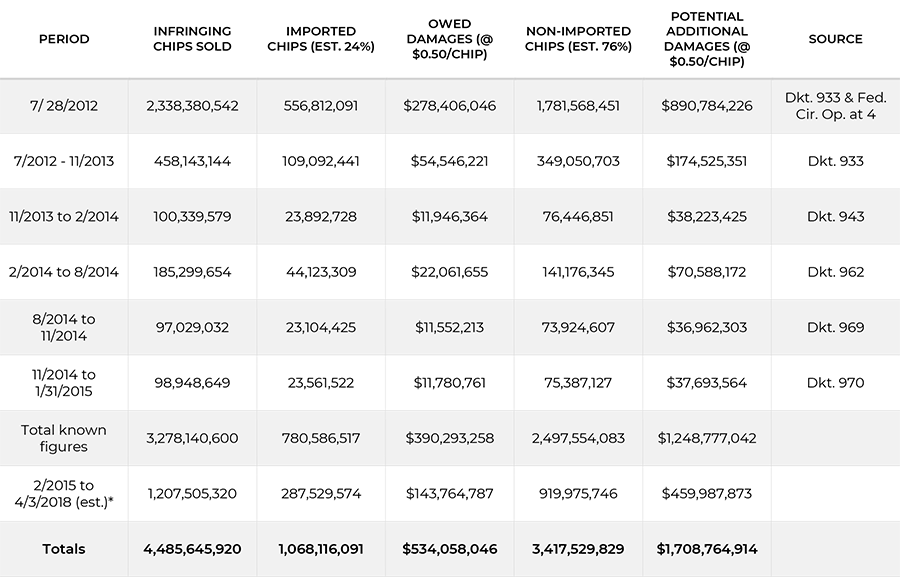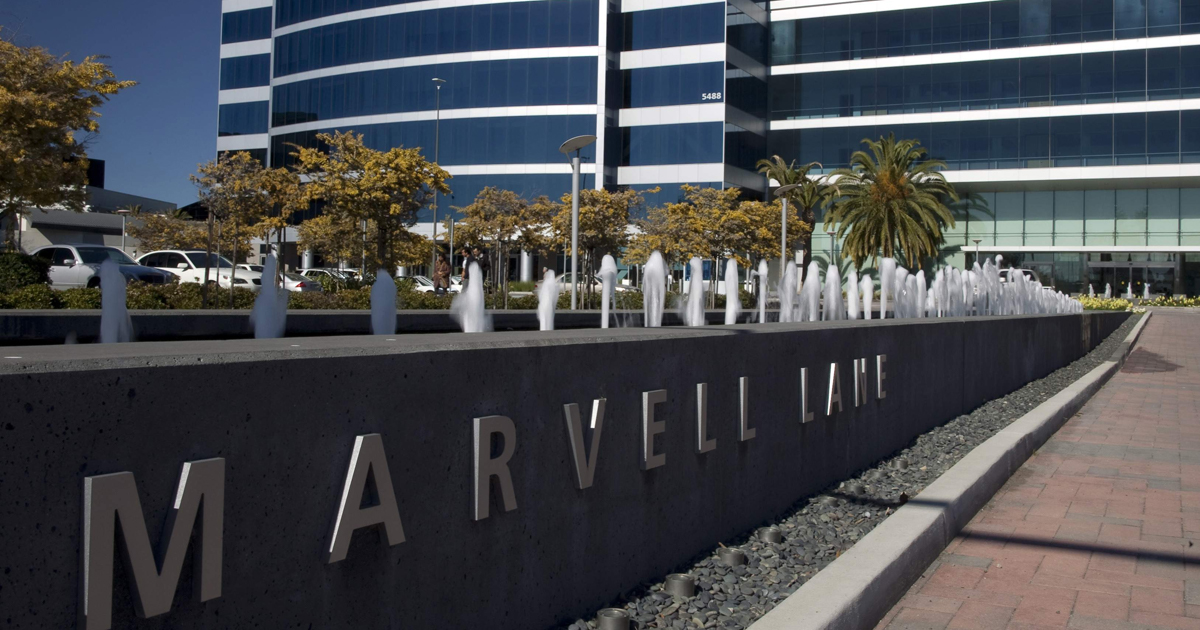Most critical, however, was what the court did not decide: namely, whether Marvell (MRVL) can be held liable for the sale of billions of accused chips that were manufactured abroad and never entered the United States. Instead, the appellate court sent that issue back down to the district court for further development of the factual and legal record.
That outcome raises two questions: (1) whether the result of the remaining litigation will materially impact Marvell shares based on current valuations, and if so; (2) what litigation outcome should we expect, and why?
This analysis addresses the first question and concludes that Marvell shares are likely to move materially based on the pending litigation outcome. The second issue—whether Marvell will win or lose—will be the subject of a separate, forthcoming analysis.
In its opinion, the Federal Circuit found that the evidence supported the jury's award of a $0.50 royalty per infringing chip against Marvell. It further affirmed Carnegie Mellon's damages with respect to the approximately 24% of accused chips that had been imported into the United States. In a win for Marvell, the appellate court tossed the lower court's award of $300 million in enhanced damages.
But the Federal Circuit refused to decide, and remanded, as to whether Marvell is liable for the roughly 76% of accused chips that never entered the United States.
As a result of those rulings, it is certain that Marvell will have to pay approximately $534 million to CMU: $390 million in known damages up to January 31, 2015, and approximately $144 million more through April 3, 2018, the life of the patents. (For underlying calculations, see table below).
It remains uncertain, however, whether Marvell will also have to pay damages for chips not imported into the United States. Based on the public record, I estimate a total of 3.4 billion such chips through April 3, 2018, translating to an additional potential liability of $1.7 billion.


*actual figures will depend on Marvell's sales and its ability to bring a successful, non-infringing design around to market.
Determining whether Marvell will prevail requires sophisticated legal analysis. But for that analytical game to be worth the candle, we must first address the question of "materiality," i.e., whether Marvell shares can be predicted to materially react based on the ultimate outcome of that $1.7 billion question mark.
The short answer is: yes. Here is why.
Marvell's current market capitalization is approximately $5.5 billion. It holds roughly $2.16 billion in net current assets once we account for the $534 million it will pay for the imported chips. Its valuation over net current assets is thus approximately $3.35 billion. Analysts at Credit Suisse expect it to earn roughly $250 million in EBITDA this year and $300 million next year—down sharply from $550 million last year. Assuming the more generous $300 million EBITDA estimate paints a more accurate picture of Marvell's future earnings, Marvell's valuation is currently at 18.3x EBITDA. (Using TTM would be inappropriate here because of the recent significant drop in earnings).
That 18.3x multiple is misleading though because it bakes in Marvell's substantial cash horde. The relevant figure, for our purposes, is Marvell's valuation multiple over net current assets ((market cap – net current assets) / EBITDA). Based on $300 million EBITDA, that multiple is currently 11.2x.
From here, in order to determine whether the outcome of the CMU case will materially impact Marvell shares at current levels, we can look to two questions.
Question (1): If Marvell were found liable on remand, should we expect shares to fall from current levels?
If Marvell were held liable as to the $1.7 billion in damages for non-imported chips, it would be left with only ~$400 million in net current assets. In that scenario, if shares did not budge, Marvell would have a market cap of $5.1 billion over net current assets ($5.5 B market cap – $400 million net current assets). To justify that valuation on $300 million EBITDA, Marvell would have to command a 17x multiple over net current assets. Given the current macro and micro trends, a 17x multiple appears untenable, suggesting Marvell shares would have to fall.
To test the potential size of the impact, we can play with the EBITDA multiple. For instance, if the market maintained the current 11.2x multiple over net current assets, Marvell's market cap would fall to $3.75 billion (300M EBITDA x 11.2 + 400M net current assets). That would translate to a 30% drop from current levels.
As another example, even if Marvell's multiple increased to 14.5x over net current assets, its market cap would still have to fall to about $4.75 billion—a 14% drop from current levels.
Moreover, with only $400 million left in net current assets, Marvell may face operational challenges, creating further downward pressure.
Thus while Marvell shares have lost significant market cap since the Federal Circuit issued its decision on August 4, it nonetheless appears that a loss as to the non-imported chips will have further material impact.
Question (2): If Marvell were to prevail, should we expect shares to rise from current levels?
The answer, of course, depends on the market's collective view of Marvell's larger business prospects once the company has removed its massive litigation overhang. If the current 11.2x multiple over net current assets holds, Marvell shares should see no gain—an admittedly circular observation. At a 12.5x multiple, shares would rise 7.5%. At a 14.5x multiple Marvell shares would rise about 18%.
* * *
In short, the outcome of the pending issues in the CMU litigation remains material to Marvell shares. Shares would likely drop significantly from current prices if Marvell were found liable for the 74% of accused chips that were not imported into the U.S, and may see a meaningful rise if Marvell prevails.
So will Marvell win or lose, and why? That is the subject of my next analysis.
But Marvell, for its part, has been decidedly bullish throughout.
In 2014, when filing its appeal, Marvell issued a press release stating: "Marvell has not accrued any liability in its previously issued financial statements for this lawsuit, nor do we expect to record a liability on our financial statements given current circumstances. We continue to believe that a material loss is not probable based on our assessment of the likelihood of a successful appeal."
And after the Federal Circuit affirmed the validity of Carnegie Mellon's patents, Marvell's infringement of those patents, and Marvell's liability for at least $500 million, with the possibility of an additional $1.7 billion, Marvell expressed further optimism:
"Marvell is pleased to report that the Federal Circuit has vacated the judgment in favor of Carnegie Mellon University, reducing the award by more than $1.25 billion and ordering a partial retrial on the location of sales of chips made and shipped abroad. The company is studying the specifics of the opinion carefully to determine its future options."
*Disclaimer: I am a commercial litigation attorney with a particular focus on patent litigation. I am not an investment advisor, and this is neither investment advice nor legal advice. My bio. Contact: kayvan@noroozi.la.


